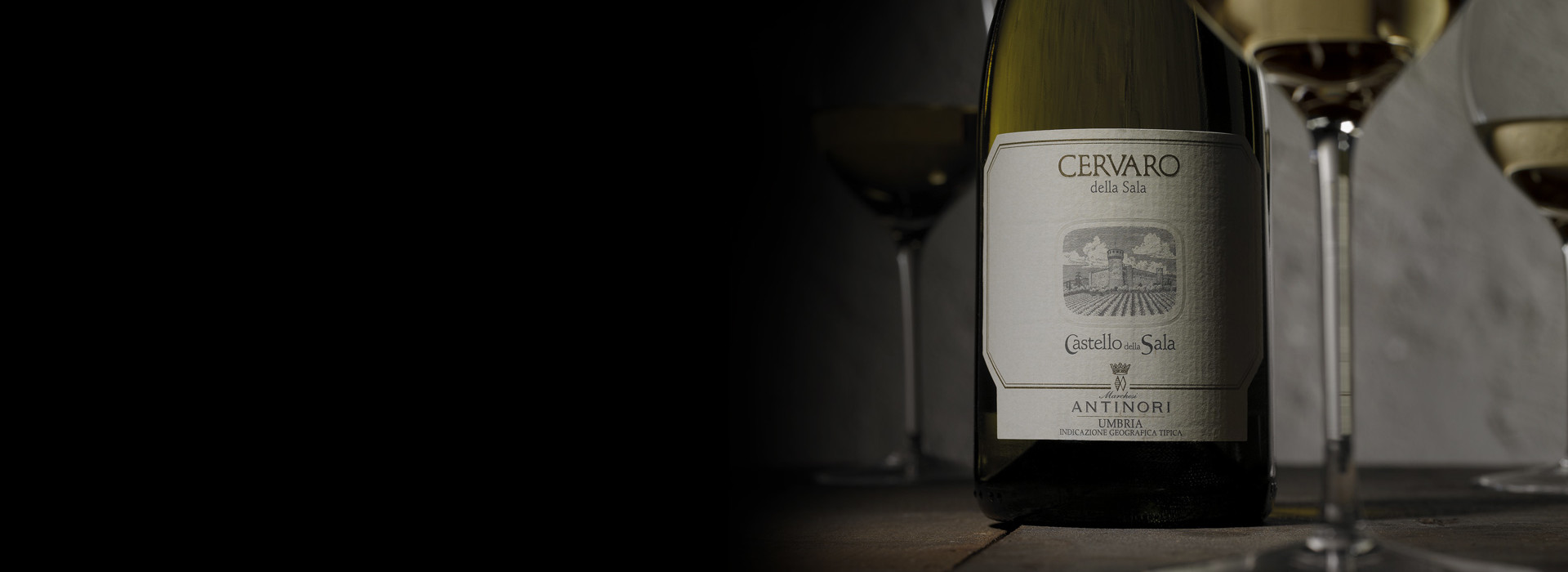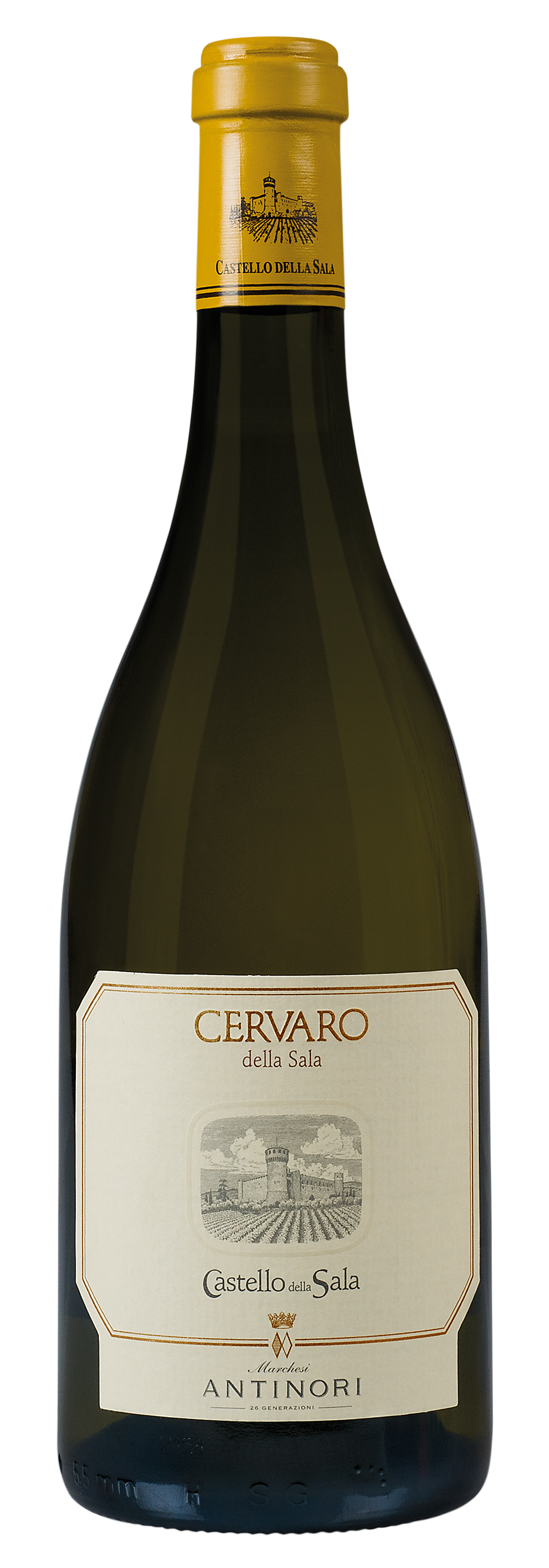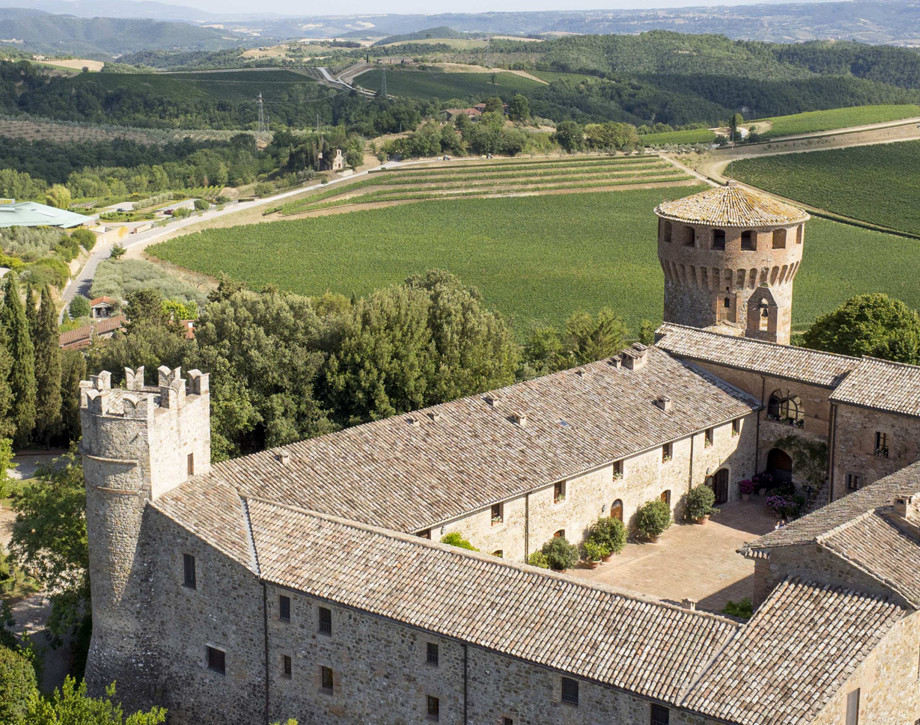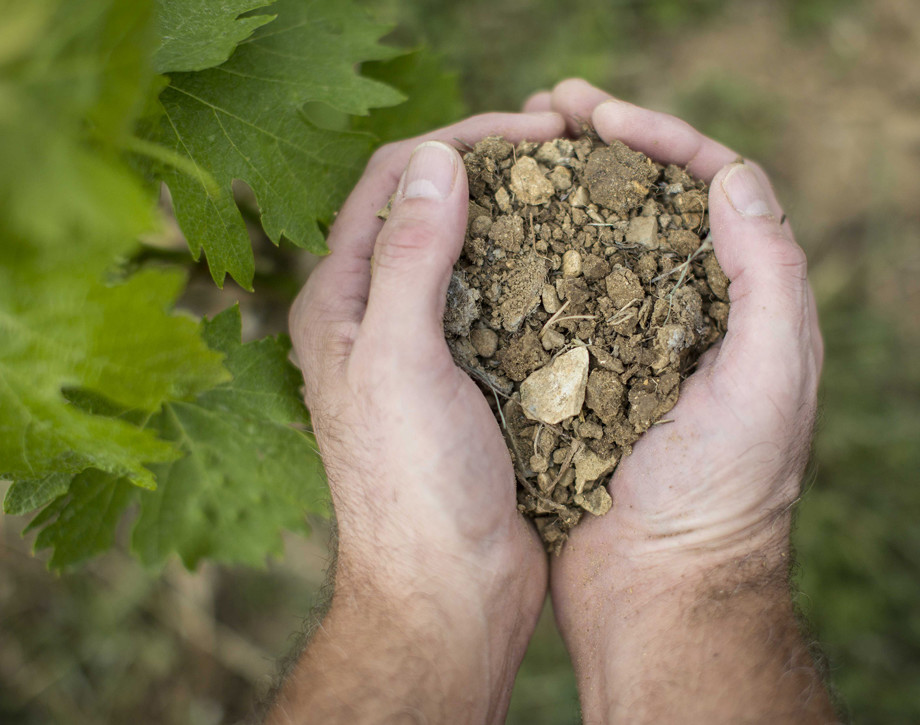Cervaro della Sala

The Wine
The name Cervaro comes from the noble family that owned Castello della Sala during the 14th century, Monaldeschi della Cervara. A blend of Chardonnay grapes and a small quantity of Grechetto make a wine that can age over time and represent the elegance and complexity of this unique estate. Cervaro della Sala is one of the first Italian white wines to have malolactic fermentation and aging take place in barriques. The first vintage of Cervaro to be produced was the 1985 vintage.
Historical Data
The name Cervaro comes from the noble family that owned Castello della Sala during the 14th century, Monaldeschi della Cervara. A blend of Chardonnay grapes and a small quantity of Grechetto make a wine that can age over time and represent the elegance and complexity of this unique estate. Cervaro della Sala is one of the first Italian wines to have malolactic fermentation and aging take place in barriques. The first vintage of Cervaro to be produced was the 1985 vintage.

The Wine
The name Cervaro comes from the noble family that owned Castello della Sala during the 14th century, Monaldeschi della Cervara. A blend of Chardonnay grapes and a small quantity of Grechetto make a wine that can age over time and represent the elegance and complexity of this unique estate. Cervaro della Sala is one of the first Italian white wines to have malolactic fermentation and aging take place in barriques. The first vintage of Cervaro to be produced was the 1985 vintage.

In Honor of the Monaldeschi della Cervara Family
The wine’s name honors the Monaldeschi della Cervara family who was the historic owner of Castello della Sala in the XVI century.
The Barrique
Cervaro della Sala was one of the first Italian white wines to have malolactic fermentation and aging take place in barriques.
The Concept
The idea behind Cervaro della Sala was to craft a white wine able to age over time.
The Enologist
In 1985, Renzo Cotarella, who was chief enologist at Castello della Sala at that time, made the first vintage of Cervaro della Sala.
Climate
The 2016 vintage was characterized by a winter with frequent rainfall and by repeated and significant drops in temperature; the spring which followed was not particularly mild in its weather as well. The frequent but not particularly abundant rains between late April and mid-June, despite the important lowering of temperatures during the first ten days of May, favored the early and vigorous growth of the Chardonnay and Grechetto vine vegetation. This slightly precocious beginning of the vineyard’s cycle of growth gradually came back into balance during the month of July. A warm summer with positive temperature swings from daytime heat to evening and nighttime coolness assisted in the development of the aromatic components of the two grape varieties. The picking of the Chardonnay began during the last ten days of August and was followed by the Grechetto harvest, as usual two weeks later in time and which terminated in mid-September.
Vinification
The grapes were picked during the earliest hours of the morning in order to assure that the grapes which reached the cellars were entirely whole and healthy, not stressed by high daytime temperatures. The attention given to the crop continues in the cellar thanks to the special design of the structure, conceived to take advantage of the force of gravity, avoiding mechanical intervention on the grapes and the must. After a brief four hour period of skin contact at 50° Fahrenheit (10° centigrade) the must went into stainless steel tanks before going into oak barrels. Both the primary and the malolactic fermentation took place in barrel. After approximately three months the Chardonnay went back into the stainless steel tanks to be blended with Grechetto (which had been fermented separately in stainless steel). After bottling, the wine was aged in bottle for several months in the historic cellars of the Castello della Sala before commercial release.
Historical Data
The name Cervaro comes from the noble family that owned Castello della Sala during the 14th century, Monaldeschi della Cervara. A blend of Chardonnay grapes and a small quantity of Grechetto make a wine that can age over time and represent the elegance and complexity of this unique estate. Cervaro della Sala is one of the first Italian wines to have malolactic fermentation and aging take place in barriques. The first vintage of Cervaro to be produced was the 1985 vintage.
Tasting Notes
The wine, a light straw yellow with brief greenish highlights, expresses rich, complex, and intense aromas. The notes of citrus fruit, pears, and acacia flowers are in perfect balance with the sweet and spicy notes of vanilla. The palate is supple but vibrant, elegant and well structured, characterized by the classic mineral sensations and by the light notes of hazelnut butter.
Awards
James Suckling 97/100 USA Wine Advocate 95+/100 USA
Scheda

Castello della Sala
Castello della Sala is located in the Umbria region, not far from the Tuscan border, about 18 kilometers from the historic city of Orvieto. The Medieval castle’s property extends over an area of 600 hectares (1482 acres), 229 hectares (495 acres) are planted with vineyards at an altitude that varies between 220 and 470 meters above sea level (722/1541 feet) on the gently rolling hillsides that characterize the beautiful countryside in this area. Castello della Sala is the perfect place for growing white varieties. The vines grow in clay and calcareous based soils, rich in fossil shells, and they are well exposed to the rising of the sun with an excellent difference of temperature between day and night. The one exception to the rule is Pinot Noir, the only red variety that has found in this area ideal growing conditions to best express its full potential.

Soil
Originating in the Pliocene period, rich in marine fossils with veins of clay.


















